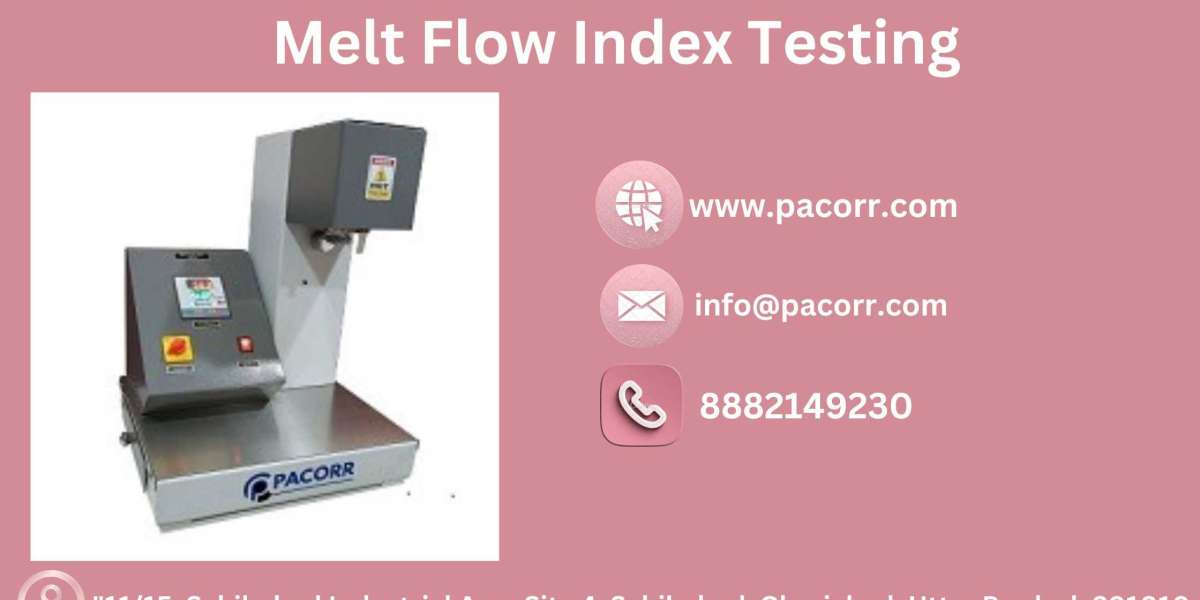Understanding the Importance of the Melt Flow Index Tester
In the manufacturing sector, quality control is paramount. Ensuring the consistency and performance of materials is crucial for delivering reliable and high-performing products. One of the key tools used in this process is the Melt Flow Index (MFI) Tester. This instrument is indispensable for manufacturers dealing with thermoplastic materials, providing essential insights into the properties of these materials under various conditions. In this article, we delve into the significance, functionality, and applications of the Melt Flow Index Tester.
What is a Melt Flow Index Tester?
A Melt Flow Index Testing, often referred to as an MFI Tester, is a device used to measure the melt flow rate (MFR) of thermoplastic polymers. The melt flow rate is the rate at which a polymer melts and flows under specific conditions of temperature and pressure. This measurement helps in determining the viscosity and flow characteristics of the polymer, which are critical for processing and end-use performance.
How Does the Melt Flow Index Tester Work?
The operation of an MFI Tester involves heating a sample of the polymer to a specified temperature until it reaches a molten state. The molten polymer is then extruded through a die of a standardized size under a set load. The rate at which the polymer extrudes, usually measured in grams per 10 minutes, is recorded as the melt flow index. The test conditions, including temperature and load, are defined by international standards such as ASTM D1238 and ISO 1133.
Key Components of a Melt Flow Index Tester
- Heating Chamber: Where the polymer sample is heated to the required test temperature.
- Piston and Die: The molten polymer is forced through a die by a piston under a specified load.
- Cutting Mechanism: This mechanism cuts the extruded polymer at regular intervals to measure the flow rate accurately.
- Weighing Scale: Used to measure the weight of the extruded polymer, which is then used to calculate the melt flow rate.
Importance of the Melt Flow Index Tester in Quality Control
Material Selection and Comparison
The Melt Flow Index Tester aids manufacturers in selecting the appropriate material for specific applications by providing insights into the flow properties of different polymers. This information is crucial when comparing different batches or grades of materials to ensure consistency in production.
Process Optimization
Understanding the flow characteristics of polymers helps in optimizing the manufacturing process. By knowing the melt flow index Teste, manufacturers can adjust processing parameters such as temperature, pressure, and screw speed in extrusion and injection molding processes to achieve optimal results.
Quality Assurance
Regular testing with the MFI Tester ensures that the materials used in production meet the required specifications and standards. This is particularly important for industries such as automotive, aerospace, and medical devices, where material performance is critical.
Applications of the Melt Flow Index Tester
Polymer Production
In polymer production facilities, the MFI Tester is used to characterize new formulations and ensure batch-to-batch consistency. This helps in maintaining the quality and performance of the produced polymers.
Plastic Processing
For plastic processors, the MFI Tester provides valuable data for adjusting processing conditions. This ensures that the final products have the desired properties and meet customer requirements.
Research and Development
In RD laboratories, the MFI Tester is used to develop new materials and improve existing ones. By understanding how different additives and processing conditions affect the melt flow rate, researchers can create polymers with tailored properties.
Conclusion
The Melt Flow Index Tester is a vital tool in the field of polymer testing, offering crucial insights into the flow properties of thermoplastics. By providing accurate and reliable data, it helps manufacturers ensure the quality and performance of their products. Whether in production, processing, or research, the MFI Tester plays an essential role in advancing the capabilities of the plastics industry. Investing in a high-quality Melt Flow Index Testing is, therefore, a strategic decision for any organization committed to maintaining high standards and achieving excellence in polymer manufacturing.





